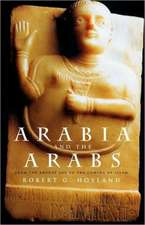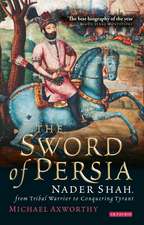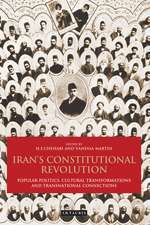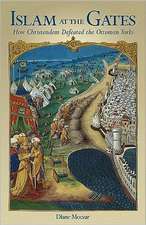Iran: At War With History: Routledge Library Editions: War and Security in the Middle East
Autor John W. Limberten Limba Engleză Paperback – 2 oct 2017
| Toate formatele și edițiile | Preț | Express |
|---|---|---|
| Paperback (1) | 241.15 lei 43-57 zile | |
| Taylor & Francis – 2 oct 2017 | 241.15 lei 43-57 zile | |
| Hardback (1) | 680.31 lei 43-57 zile | |
| Taylor & Francis – 11 iul 2016 | 680.31 lei 43-57 zile |
Preț: 241.15 lei
Preț vechi: 288.81 lei
-17% Nou
Puncte Express: 362
Preț estimativ în valută:
46.15€ • 48.00$ • 38.10£
46.15€ • 48.00$ • 38.10£
Carte tipărită la comandă
Livrare economică 14-28 aprilie
Preluare comenzi: 021 569.72.76
Specificații
ISBN-13: 9781138657113
ISBN-10: 1138657115
Pagini: 204
Dimensiuni: 156 x 234 mm
Greutate: 0.45 kg
Ediția:1
Editura: Taylor & Francis
Colecția Routledge
Seria Routledge Library Editions: War and Security in the Middle East
Locul publicării:Oxford, United Kingdom
ISBN-10: 1138657115
Pagini: 204
Dimensiuni: 156 x 234 mm
Greutate: 0.45 kg
Ediția:1
Editura: Taylor & Francis
Colecția Routledge
Seria Routledge Library Editions: War and Security in the Middle East
Locul publicării:Oxford, United Kingdom
Public țintă
Postgraduate and UndergraduateCuprins
1. Iran-zamin 1.1. The Physical Environment 1.2. The Economic Environment 2. The Peoples of Iran 2.1. Ethnic Groups 2.2. Religious Groups 2.3. Patterns of Culture 3. Myths and Forgotten Kings 4. Islamic Iran 5. Pahlavis and Ayatollahs 6. Revolutionary Iran Conclusion: Whither Iran? Appendix A. The Ruling IRP-Clerical Network: Political-Religious Leaders, 1979-1986 Appendix B. The Ruling IRP-Clerical Network: Institutional Structure
Descriere
Iran is the only Middle Eastern state to have preserved its national identity through the upheavals of Arab, Turkish and Mongol invasions. It is heir to the richest culture in the Middle East: a culture that extends far beyond the state’s political boundaries. This book, first published in 1987, traces elements of continuity in Iranian society from pre-Islamic times to the turmoil of the Islamic Republic. The author discusses the persistence of religion as a dominant force in Iran’s politics and society; the attraction of unorthodox doctrines such as Mazdakism, Baha’ism, and revolutionary Shi’ism; the tradition of strong, charismatic leadership; and the constant problem of ruling peoples of diverse tribal, religious and linguistic affiliations. He finds explanations for recent political changes in conditions peculiarly Iranian and examines the emerging post-revolutionary society along with some of its new institutions, including the revolutionary guards, the assembly, the neighbourhood committees, and the Friday prayer leaders.



























